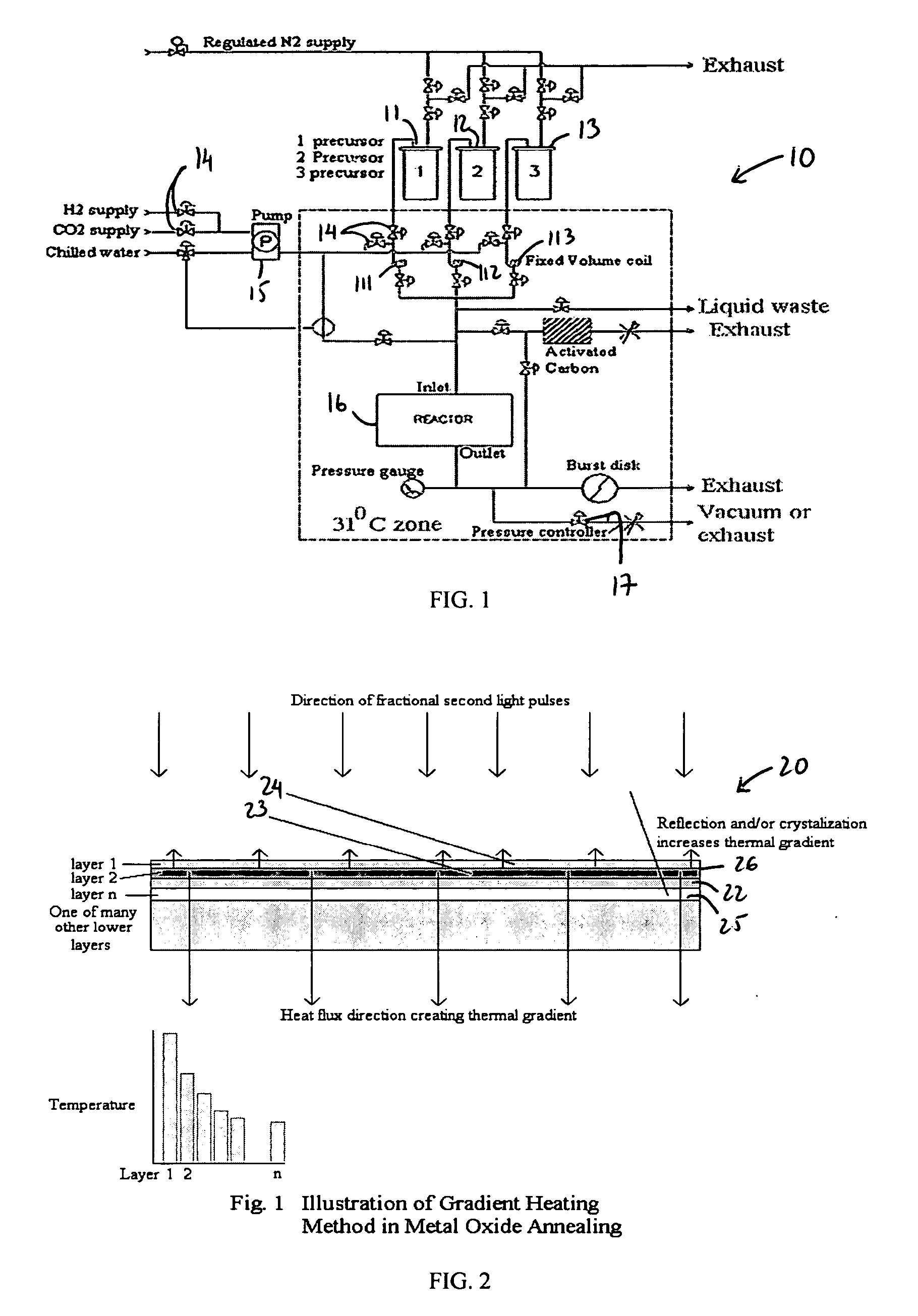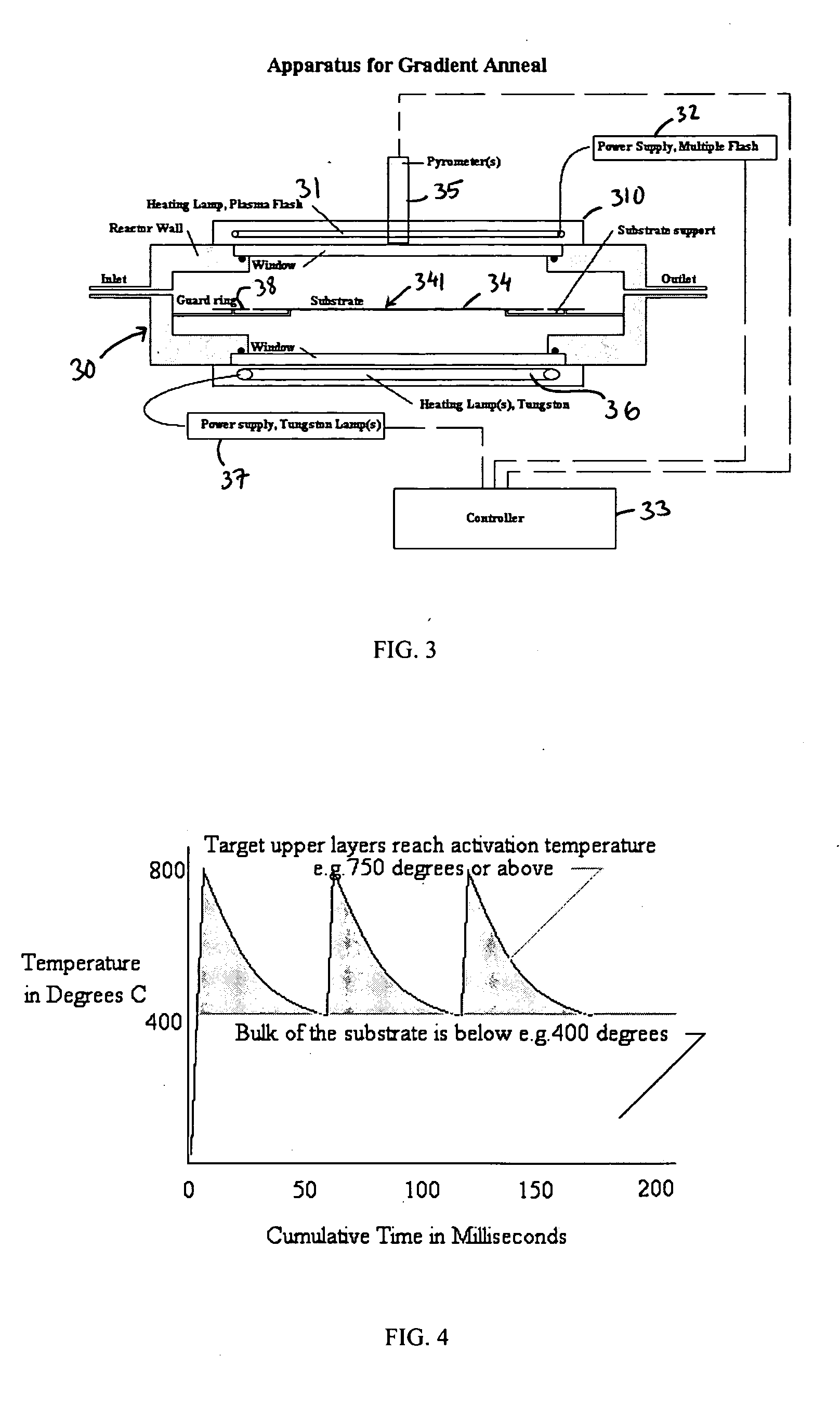Rapid thermal annealing of targeted thin film layers
- Summary
- Abstract
- Description
- Claims
- Application Information
AI Technical Summary
Benefits of technology
Problems solved by technology
Method used
Image
Examples
Embodiment Construction
[0023] The present invention provides, in one embodiment, a rapid thermal annealing (RTA) method for use in connection with the fabrication of a capacitor whereby an upper thin film or layer (i.e., targeted layer) of an integrated circuit may be heated to a desired temperature range, while exposure of the underlying layers to such a temperature range may be minimized, so as to avoid damage to the underlying layers.
[0024] In accordance with one embodiment of the present invention, the RTA method involves the use of, for example, impulse, flash-assist or laser anneal, subsequent to the deposition of a metal or metal oxide as barrier layers (e.g., oxides of Ru, Pd, Ti, Ta, etc.), dielectrics and perovskites (e.g., oxides of Al, Ta, Hf, SBT, BLT, BST, PZT etc.), and / or conductors (e.g., Pt, Ru, Ir, Cu etc.). The use of such an annealing procedure enables a thermal ramp rate to be controlled at a substantially fast rate, such that the bulk of the substrate lags significantly behind a ta...
PUM
 Login to View More
Login to View More Abstract
Description
Claims
Application Information
 Login to View More
Login to View More - R&D
- Intellectual Property
- Life Sciences
- Materials
- Tech Scout
- Unparalleled Data Quality
- Higher Quality Content
- 60% Fewer Hallucinations
Browse by: Latest US Patents, China's latest patents, Technical Efficacy Thesaurus, Application Domain, Technology Topic, Popular Technical Reports.
© 2025 PatSnap. All rights reserved.Legal|Privacy policy|Modern Slavery Act Transparency Statement|Sitemap|About US| Contact US: help@patsnap.com



